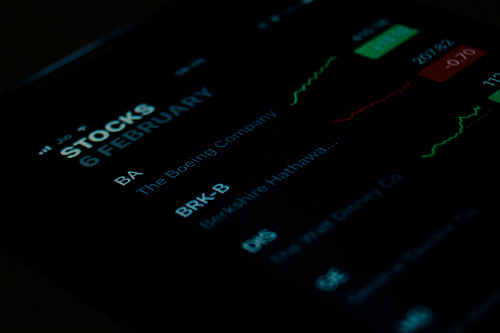In business, maximizing value is the name of the game. When strategies clash, though, how are small business owners to know which path is right for them? Shareholders face novel problems today, including significant SKU proliferation, rapid technological evolution, cybersecurity threats, international trade wars, and the appearance of entirely new industries tangential to their own, among myriad challenges.

Business owners on the battlefield must navigate this shifting environment in order to maximize their value. A very basic framework to help think through these challenges is the “buy, hold, or sell” model. Specifically, at any given point for any decision, an owner or manager has only three options: buy (invest more), sell (divest), or hold (maintain the status quo). Owners and managers have to make these decisions constantly, adapting to new criteria as they go. The wrong decision could leave the company vulnerable to competitors or prevent it from capitalizing on a major opportunity. The right decision will create new value for the company.
Future growth isn’t guaranteed to any business; Accenture found that a majority of companies (52 percent) that were on the Fortune 500 list in 2000 have shuttered their doors for good. To make the right choices at the right times, business owners must learn how to make consistent, informed decisions.
Know When to Hold ’Em
Kenny Rogers was right, both in life and in business. Small businesses succeed only when their owners know when to go all-in and when to wait for a better opportunity. A study of 500 business executives and managers found that 98% don’t utilize best practices when it comes to decision-making. Imagine your competitive advantage if you were among the 2%. The three options of value maximization — buy, hold, and sell — is the simplest framework for making strategic and tactical decisions.
Buyers invest in their businesses at the cost of immediate capital. This carries the highest risk of the three choices. An internal investment could pay great dividends, but it could also evaporate if the investment doesn’t pay off. Good buys are essential for a company’s long-term success, and good buys aren’t cheap: A study by Intuit found that the average cost to open a restaurant was nearly $500,000. That’s a big undertaking — and a big price tag to swallow if the investment doesn’t pan out.
Sellers can shed unprofitable pieces and harvest past investments. Selling carries short-term financial risk, but the real risk of selling is FOMO — fear of missing out. What if this asset grows in value? What if the market for this product or service grows, and selling now would leave the company at a disadvantage?
Stock Market Plays Huge Role in Business Value
This is particularly relevant nowadays, as the stock market has within the past year experienced record highs. Investors understandably get a bit frightened by the altitude at 25,000-plus and have to constantly make decisions to buy-sell-hold, knowing that the reality of an economic downturn is right around the hypothetical corner. The market surely can’t climb forever. Concerns over the intensifying trade war with China caused the Dow Jones Industrial Average to shed all its gains from 2018 during the first week of December.
Holders have faith in the market and maintain their positions, waiting for better opportunities in the future at the expense of opportunities today. Though holding is the least risky of the three strategies, companies in fast-paced industries often struggle to maintain course when their competitors appear to be moving faster. Holding Blockbuster shares was the wrong decision as Netflix emerged. Selling Apple shares after Steve Jobs died was also the wrong decision, as more than half of the technology giant’s nearly $800 billion market cap has come since his death.
Business owners face tremendous pressure to invest and divest correctly at every turn. While no one gets it right every time, owners who make consistently good decisions tend to come out on top. Consistency is key, but it’s not easy to attain. Owners of small businesses have more than economic factors to consider, such as acquiring top talent, building networks, and encouraging innovation. They are on the front lines of management, so any new investment or divestment will require their daily attention to see through.
Assume a market is declining. The owner could buy (via reinvesting in the business), but adding money in a down market is a risky play. This sounds like a good time to sell (harvesting past investments), but if the market is down, the sale likely won’t fetch a price the owner likes. Markets in aggressive growth cycles don’t always deserve more investment, though. If every company continues to invest, capacity becomes excessive and prices plummet. Sometimes, a sale when everyone else is eager to buy is the smartest move a company can make.

Know When to Buy, Sell, or Hold
Owners can’t see the future, which means even the best decisions won’t work out sometimes. However, small business owners and stakeholders can make consistently good decisions and keep their companies moving forward by following these tips at every crossroads:
1. Gather good intelligence
Perform market research and collect data on where the wind is blowing. Consult trusted advisors with experience in the industry. Those advisors can be service providers, such as lawyers and accountants; trusted colleagues; or even the company’s customers.
British bank Barclays wanted to understand the financial needs of university students and underwent comprehensive market research to identify how it could lure potential long-term customers in this demographic. This effort opened new revenue opportunities for Barclays and helped it avoid incorrect assumptions about that particular group. In the process, student accounts increased by 34%.
When the data could go either way, trust your gut instincts. Don’t fly in the face of reason, but remember that your own business savvy helped get the company to where it is today.
2. Plan for different scenarios
Scenario planning is about adjusting your business environment to respond to potential changes in the future. Identify a set of uncertainties — for example, continued market growth — and create different plans for each path.
The more futures for which you prepare, the better able to respond you will be when the winds shift.
3. Make a decision tree
Decision trees provide a highly effective structure within which you can lay out options and investigate their outcomes. Useful in scenario planning, decision trees can help visualize the future and your responses to changes.
Nodes in decision trees come in three types: chance, decision, and end. Chance nodes show probabilities of different results, while decision nodes force choices. End nodes, naturally, outline the results of a chosen path. A decision tree can help visually detail your options so that you are familiar with the trade-offs of choosing any particular path.
4. Perform a Monte Carlo analysis
Monte Carlo simulations model the probability of different outcomes in processes that have random variables. Use this tool to understand the role that risk plays in your prediction and forecasting models. From finance to healthcare, these probability simulations can help owners in any industry make better choices.
For business owners, any decision could make or break the company’s future. Buying, selling, and holding are all viable options in different scenarios, and what works for one business in one market might not for another. You can never know for sure, but if you follow these tips to assess every situation, you can make more consistent, more informed decisions.
Conclusion
Ultimately, maximizing value is your ultimate business goal. With the right strategies in place, making those crucial buy-sell-hold decisions will become easier to manage and more consistent — and your company will thrive as a result.


